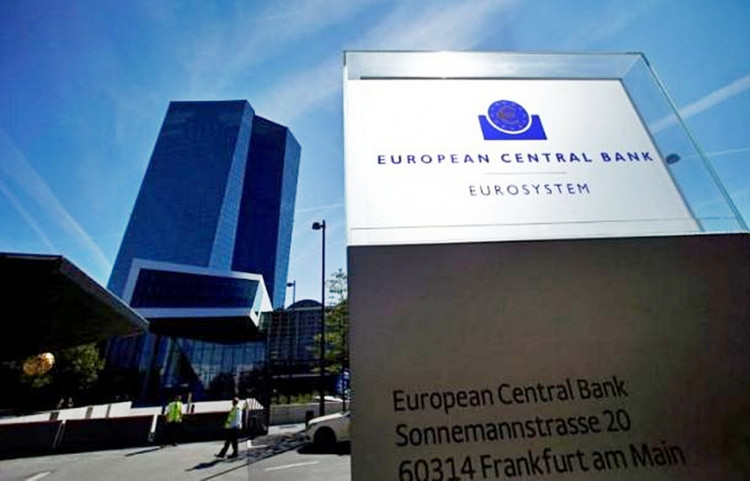The European Central Bank (ECB) has predictably paused its series of rate hikes, indicating that the current interest rates are at restrictive levels, which will further suppress demand and help reduce inflation.
On October 26, the ECB announced its latest interest rate decision, maintaining its three primary rates at historical highs: the main refinancing rate, the deposit facility rate, and the marginal lending rate remain at 4.5%, 4%, and 4.75%, respectively.
Since ending its eight-year era of negative interest rates last July, the ECB has raised rates 10 times in a row, with a cumulative increase of 450 basis points, marking its fastest tightening pace in history.
Inflation Outlook
The ECB's rate statement highlighted that inflation in Europe is expected to remain high, with strong price pressures across countries. However, inflation levels significantly decreased in September, and most measures of core inflation continue to slow. The ECB's Governing Council believes that past rate hikes have effectively influenced financing conditions, further suppressing demand, which will help reduce inflation.
Regarding the future path of interest rates, the ECB stated that decisions will be based on assessments of inflation prospects.
Analysts have shifted their focus to how long rates need to remain elevated, with investors betting on a potential ECB rate cut as early as June.
Eurozone inflation data for September showed a preliminary year-on-year increase of 4.3%, the lowest in nearly two years but still double the ECB's 2% target.
For the first time in a post-meeting statement, the ECB noted that maintaining its key interest rates for an extended period would significantly contribute to achieving the 2% inflation target.
Emergency Pandemic Purchase Program (PEPP)
Regarding the PEPP, the ECB stated that the reinvestment plan for the PEPP will continue at least until the end of 2024. The Governing Council is ready to adjust all tools as needed.
The ECB views the PEPP as the first line of defense against market turbulence. However, there are voices within the ECB suggesting this stance should be re-evaluated and possibly advanced.
The euro briefly dipped against the dollar, trading at 1.0548. As the ECB stuck to its September statement with little change in guidance, the two-year German bond yield slightly decreased. The yield spread between 10-year Italian and German bonds dropped below 200 basis points.
Lagarde's Take on Rate Hikes
ECB President Christine Lagarde emphasized during a press conference that the European economy remains weak, with a continued decline in manufacturing. Sluggish demand and tighter financing have curbed consumption. The economy might remain weak for the rest of the year, with signs of strengthening in the coming years. There are indications that the labor market is weakening.
Regarding the inflation outlook in Europe, Lagarde noted that domestic price pressures remain strong. Currently, most long-term inflation expectation indicators hover around 2%. Inflation is expected to further decrease in the short term, but energy prices are becoming increasingly unpredictable due to geopolitical factors.
When asked how much the high interest rates have impacted the real economy beyond just financing conditions, Lagarde mentioned that they've observed a significant impact of rate hikes on bank loans.
Lagarde stated, "We know there will be more effects in the future." ECB staff still expect the real economy to be impacted, with these effects continuing into 2024 and intensifying over a longer period. Economic growth has weakened, and the PMI hasn't shown signs of growth momentum.
Regarding the future policy path, Lagarde emphasized that it's too early to discuss rate cuts and that now isn't the time for forward guidance. The ECB must remain steady and committed, noting that "pausing rate hikes doesn't mean we'll never hike rates again."
When Will the ECB Cut Rates? A
nalysts generally believe that inflation in the Eurozone remains high. Despite a drop in energy costs partly driving the decline in inflation, if winter temperatures drop significantly, Europe could face higher natural gas demand, and the progress in reducing inflation might not continue.
However, with the shadow of a recession looming over European economic activity, the ECB had no choice but to pause its rate hikes.
Julian Lafargue, an analyst at Barclays, stated that going into 2024, the ECB will have to act very cautiously, with no choice but to cut rates.
Gurpreet Gill, a global fixed income macro strategist at Goldman Sachs Asset Management, believes the ECB's rate hike cycle has now ended and will start cutting rates from the third quarter of 2024. Gill mentioned that if the economy slows down sharply or the deterioration in the labor market exceeds expectations, it might prompt the ECB to shift to a more accommodative policy earlier.
Eurozone business activity unexpectedly plummeted in October, with demand declining across the region, indicating the Eurozone might slip into a recession. The Eurozone's manufacturing PMI for October fell to 43 from a previous 43.4, missing the expected 43.7. This marks the 16th consecutive month the index has been below the 50 boom-bust line and is the lowest level since May 2020.






